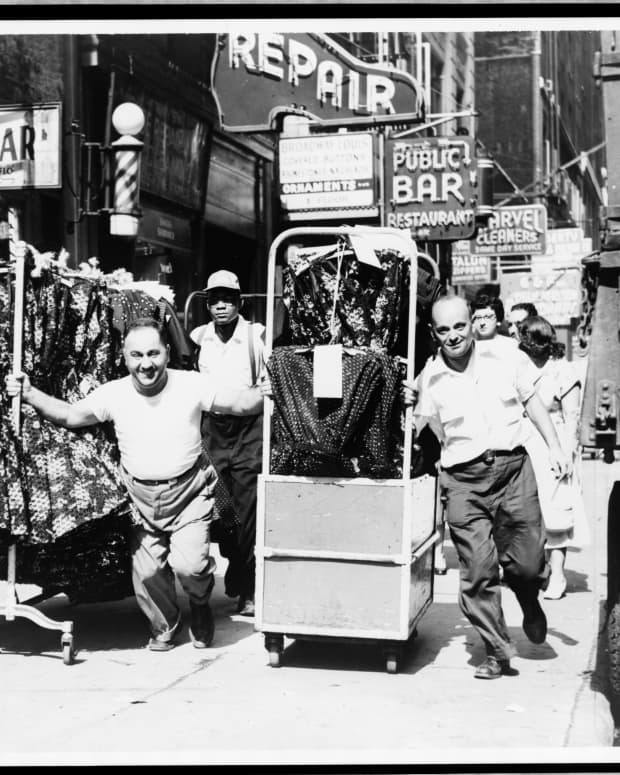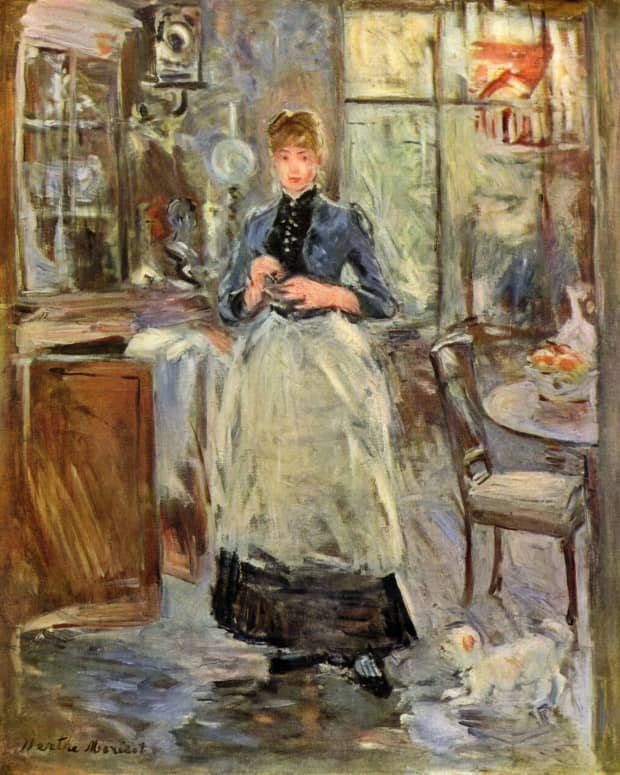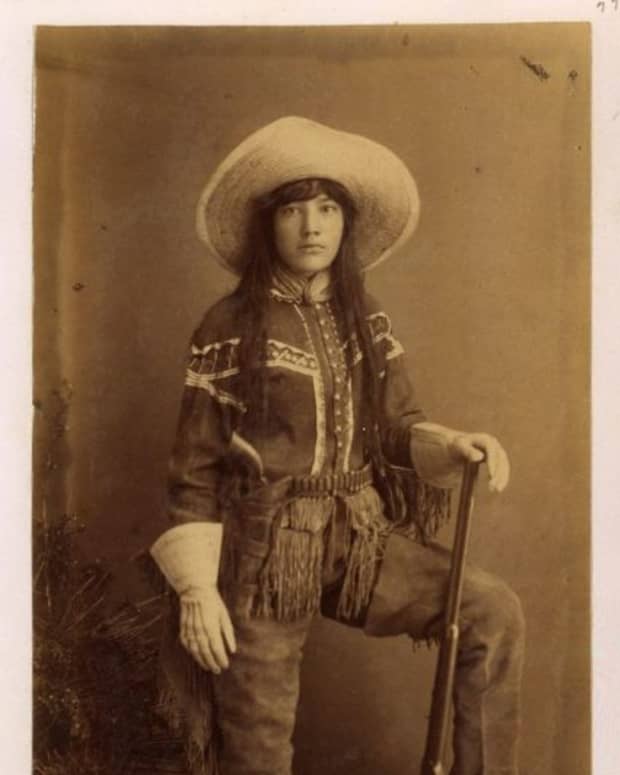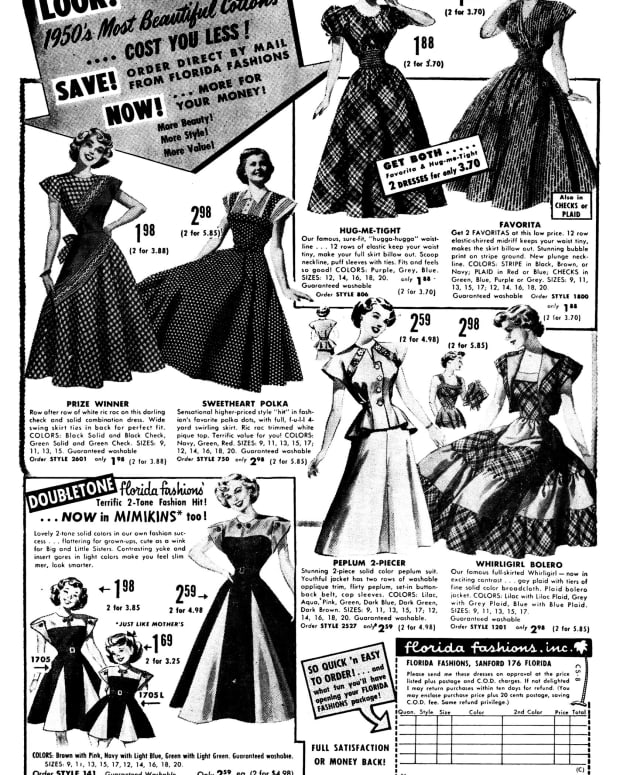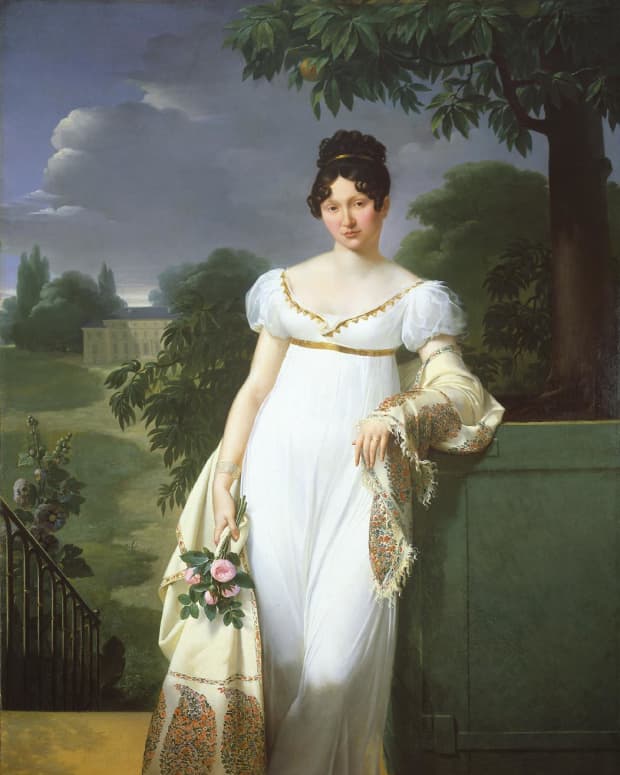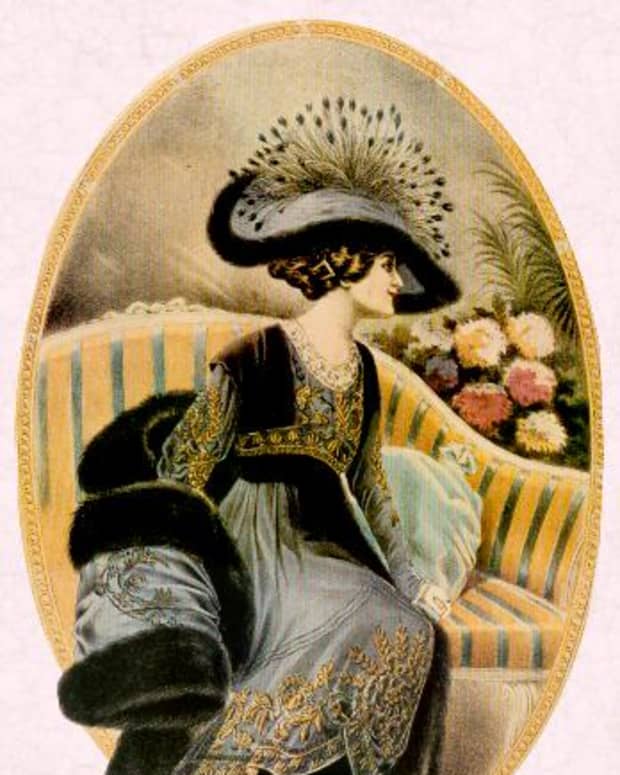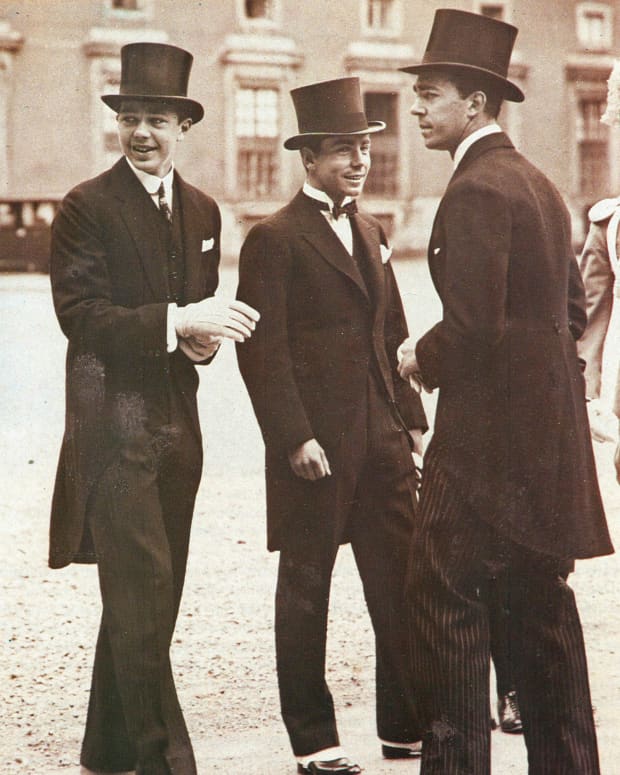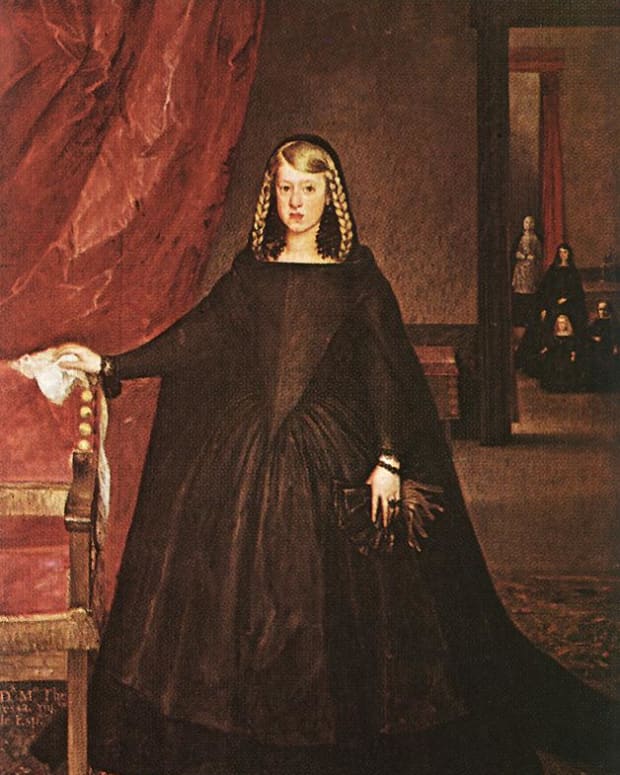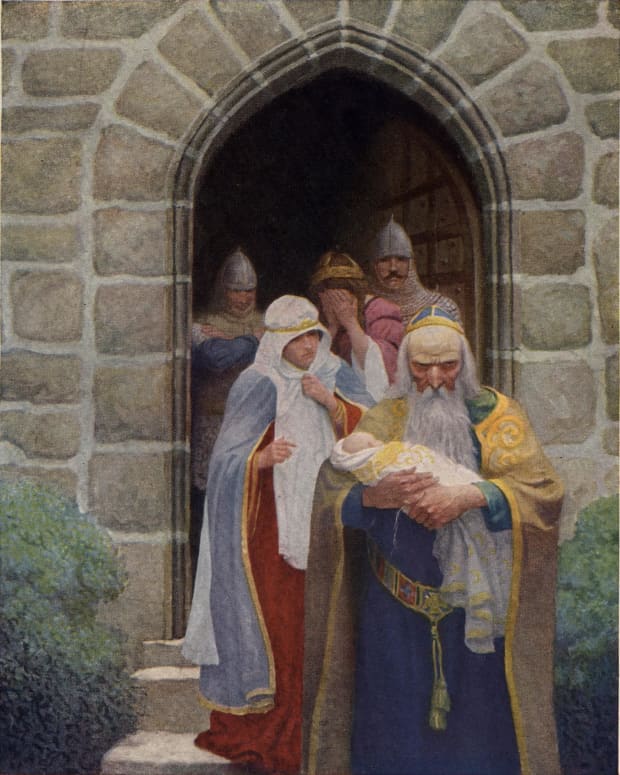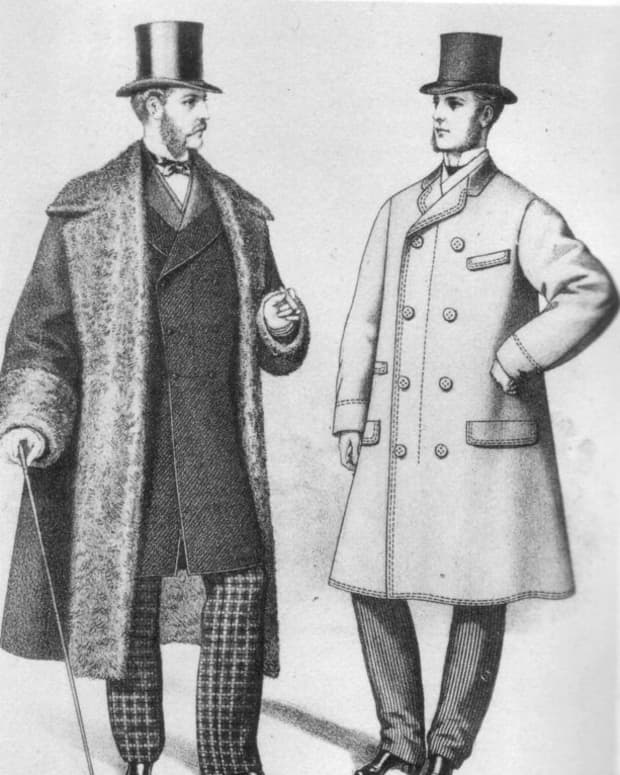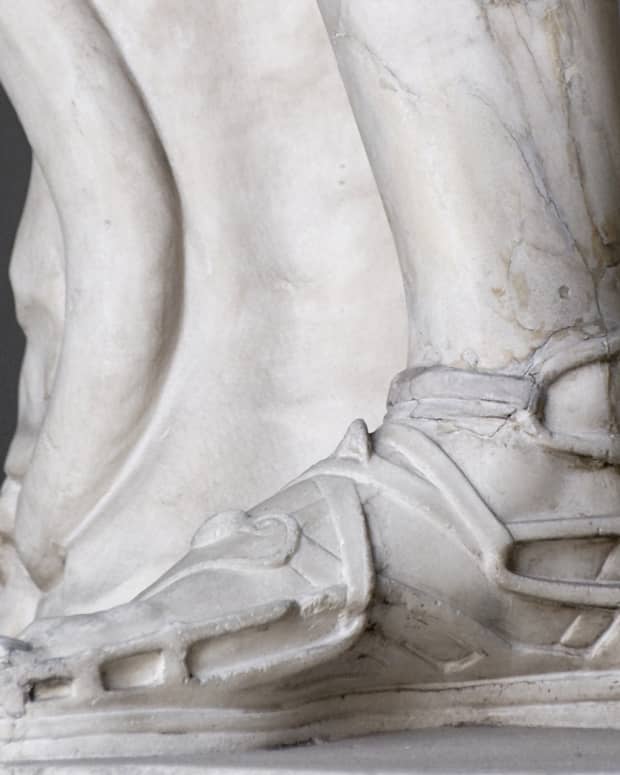History of Clothing - Why We Wear Clothes
Dolores's interest in fashion history dates from her teenage years when vintage apparel was widely available in thrift stores.
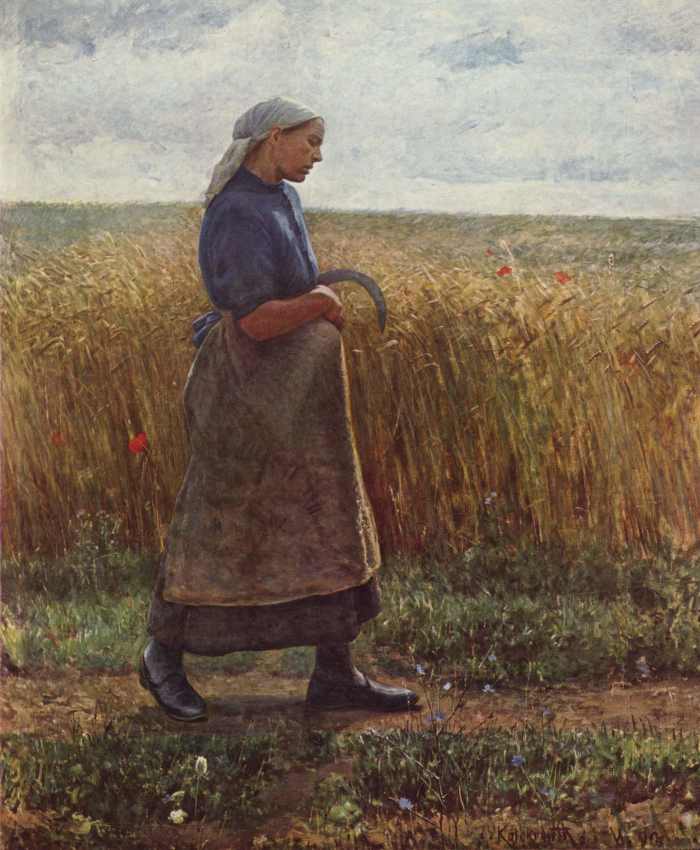
The clothing of a peasant was simple, inexpensive, and made for ease of movement
Painting by Leopold Grofvon Kakkreuth; wikimedia commons; public domain
People wear clothes for many reasons, primarily for protection and decoration. While it may seem that protection from the elements is the main function of clothing, the concept of decorating the body is an ancient practice, going back to the days of the Neanderthal who disappeared 30,000 years ago.
Garments have been worn for thousands of years as gender identification, to promote sexual attractiveness, to display status, age, occupation, religion, group membership, and political affiliation, for ceremonial occasions, and for personal expression. Primitive cultures of the modern world who live in clothing optional societies adorn themselves with scarring, tattoos, body paint, amulets, and headgear.
Throughout history, clothing choices were limited by available materials. When people began to devise garments, they were limited by their environment, technology, and geographical place in the world. An abundance of sheep offered wool. In or near places where flax grew, linen became a primary source of woven fabric. As trade routes grew, people were able to expand their use of available materials.
Functionality also played an important role in the wearing of clothing. Hard working peasants needed garments that allowed for ease of movement while the elite displayed their status and power by wearing more elaborate costumes that often restricted movement.

This 4,000 year old textile inventory documents a list of linen fabrics including undergarments, shirts, and bed sheets (2600 BCE)
Photo by Juan R. Lazaro on wikimedia commons; CCA
Historical Evidence of Clothing
Garments wear out. Imagine how many of today's garments would last 1,000 years or more! Few old garments appear as archaeological evidence. But experts have found evidence of clothing through art such as statues and cave paintings. Written accounts, some thousands of years old, have survived that offer information on trade, business, inventories, and letters.
The Max Plank Institute in Germany suggests that people wore some type of clothing as long as 107,000 years ago. David Reed of the University of Florida suggests that people wore clothing as long as 170,00 years ago. The study of body lice DNA showed that body lice differentiated from head lice around that time.
Neanderthals appear to have used dyes 75,000 years ago as suggested by lumps of iron oxide found at Shanidar Cave in Iraq. Bracelets and necklaces made of animal sinew strung with beads made of shells, bones, and teeth have been found in Neanderthal grave sites.
Accounts of the textile trade document textiles used for trade in the ancient Middle East and Egypt. Physical evidence of linen has been found in Eastern Europe that dates 30,000 years ago.

Historic Arctic Europeans - People living in cold climates wearing furs and padded garments for insulation.
wiikimedia commons; public domain
Clothing As Protection
A garment protects the body from much more than a chilly day. Garments protect people from sun and wind burn as well as blown dust, insects, thorns, and rain. Wide hat brims may be attractive but they also protect the face from the sun, the eyes from glare, and keep rain off the face.
Ancient Egyptian women wore linen so fine as to appear transparent. Linen cools the body and wicks away the moisture of perspiration.
Workers wear sturdy clothing as well as protective gear - think cowboys in chaps, butchers in aprons, and fire fighters in fire prof jackets.
The ancient Romans in their togas believed that trousers were a barbarian style, but Northern Europeans lived in a much colder climate which demanded greater insulation provided by pants. The equestrian people of ancient times wore pants to prevent chaffing.

The traditional dress of Old Order Amish women is plain and modest.
Utente the Card Expert on wikimedia commons; CCA
Clothing As Modesty
We often attribute modesty to a sense of decorum and morality. But the concept may be much more than Adam and Eve donning fig leaves. People who protected themselves from the elements, from cold, heat, sunburn, from insect bites, from scratches and cuts from thorns would not only look more attractive, but would have had a survival advantage. Remember that antibiotics are a relatively new invention and that, in the past, an infected cut could kill you.
Modesty varies from one culture to the next and even varies in one culture depending on circumstance. A woman who would think nothing of wearing a bikini at the beach would never do so on a city street. Not only would she seem immodest, but she'd look like an idiot.
Modesty can also be tied to tradition. In the Middle East, especially in Muslim cultures, full body covering is modest behavior. But harsh desert climates demand the protection offered by head to to dressing.
Read More From Bellatory
Elders often object to new styles on the basis of morality. The shocking view of women's legs when hems rose in the 1920s may have been more of a result of the automobile than of the immodest behavior of young ladies. It's easier to maneuver behind the wheel of a car without the encumbrance of long or tight skirts. Trousers appeared immodest to the elders of the early 20th century. But changes in the activity levels of young women, in their new interest in sports, in women taking on roles previously the realm of men made wearing pants more practical.
The Impact of Technology on Clothing
Technology has a huge impact on why people wear certain garments. The production and distribution of textiles, footwear, headgear, and ornamentation depends on the ability to produce clothing and to move it from place to place.
When people learned to weave textiles from wool and flax, their garments became more complicated than the older clothing made out of leather and fur. Wool and flax were more comfortable and more adaptable to changes in the weather, and easier to work with.
The establishment of trade routes allowed people to move their textiles greater distances and to obtain textiles from sources far from home. Silk brought to Europe from China created a whole new source of luxury for the elite and enriched the mercantile class.
The spinning wheel, and ever more complicated looms quickened production and availability of fabrics. The Industrial Revolution led to mass production that not only changed the economy, but led to more rapidly changing styles. As investors produced fabrics and garments more quickly, they needed the customers to increase demand. While previous styles changed over generations, producers needed to create a demand for their product.
Magazines featured fashion plates to lure women into buying the latest style. Transportation technologies like steam ships, trains, and trucks allowed garments and fabrics to be moved more quickly. As communication technology became faster (moving pictures, TV, the internet) concepts of new styles spread faster than in the slower paced past.
The creation of synthetic fabrics like nylon made clothing cheaper. People today have more garments than they did 100 years ago.
The Influence of Gender and Sexual Attractiveness on Clothing
Throughout history, people have worn clothing as gender identification and to appear attractive to the opposite sex. In most cultures, men and women wear slightly different types of garments.
In ancient times, the length of a robe depended on gender. In Ancient Rome men wore shorter hems wile women wore long, draped gowns. The costumes of Ancient Egypt are also gender specific. In medieval Europe men wore tunics exposing their legs, while women's legs were covered at all times.
The idea of what is sexually attractive can change over time. After long years of deep decolletage that highlighted the bosom, style changes were made to emphasize the hips. When hemlines rose in the early 20th century, women's legs were emphasized as the object of attraction.
While the occasional appearance of women in trousers seemed ridiculous and unfeminine in the late 19th century, one hundred years lager, slacks came to be viewed a quite fetching.

They did not dress like this all the time
Painting by Samuel Theodor Gencke; wikimedia commons; public domain
Clothing and Status
A person's status in the social hierarchy can be easily judged by what they wear. Styles, fabrics, colors, headgear, and ornamentation are markedly different between people of various socio-economic levels. This may seem obvious when we look at portraits of kings and queens of yesteryear as opposed to pictures of peasants. But even today, when we all dress in a similar manner the quality of materials used and production of the garment is obvious.
The better the clothing, the higher the status of the wearer. This works to define the powerful and to establish who is in charge. While factory workers wear protective garb and tough utility garments, the boss can be easily identified in his white shirt and tie.
In medieval Europe, laws were enacted that mandated dress in accordance with social status. Sumptuary laws forbade members of the newly wealthy mercantile class from wearing certain colors, fabrics, and embellishments. The nobility feared that the power of fancy clothes might diminish their own.
An experiment by Tilburg University of the Netherlands sent out two groups of people to a shopping mall in order to convince others to take a survey. The group that wore designer labels found that 52% of people asked agreed to take the survey. The non designer logo questioners only convinced 13% of take the survey. Obviously, we assign status and authority to people wearing garments that indicate wealth.
Status not only refers to social position. One can tell a person's marital status at a glance by looking for a wedding ring on the ring finger of their left hand.

In the last century a nurse could be identified by her white dress and cap
National Library of Medicine; wikimedia commons; CCA
Clothing and Group Membership
Children can identify the group membership of a person from a simple drawing. Police, firefighters, health care workers, military personnel, business people, farmers, and the clergy can all be clearly spotted by what they wear.
People of certain religious groups can be identified by their clothing. A Catholic priest wears a slightly different collar than a Protestant minister. Hasidic dress identifies a person of the Jewish faith. Muslims can often be identified by their garments. Old Order Amish differ from Traditional Mennonites by wearing plain dress and beards for married men while Traditional Mennonite women wear printed fabrics, and the men do not wear beards.
Until the late 20th century, nurses typically wore white uniforms. The white cap was unique to the school that each nurse attended.
Interests, hobbies, and favorite recreational activities are often declared by clothing choices. We form stereotypes in our minds of skate boarders, hikers, surfers, golfers, etc. A mid 20th century American homemaker could be identified by her house dress and apron.
Clothing as a Political Statement
Politics are often displayed by dress. Today, a red tie indicates a Republican while a blue tie means the wearer is a Democrat. A person dressed in hippie garb describes their anti-establishment leanings. For 200 years, the Bohemian look has shown that the wearer is against mass production and embraces recycling, handicraft, and artistic individuality.
War influences the clothing that we wear. During wartime, popular styles often feature a military look. Fabric restriction of World War II introduced shorter hemlines, non leather footwear, and less embellishment than in the past. Colonial American imported textiles as it was more economical to export agricultural products and timber. But the American Revolution and a boycott of British products induced women women to take up spinning and to create homespun fabrics. Simple homespun garb became a patriotic statement.
The communist revolution in China introduced the famous Mao jacket. As the country turned away from the concept of tradition styles and class division, simple garments (a boxy jacket and loose trousers) became the national form of dress.
Ceremonial Dress
Certain garments are worn for rites and celebrations. The traditional royal dress of European monarchs demanded ornate clothing and headgear for ceremonial occasions and portraits. The kings and queens of yesteryear did not ordinarily wear heavy crowns and cumbersome, bejeweled fur capes for every day wear.
A bride can be easily identified by her clothing. Think of resplendent Indian brides, or the typical western white bridal gown.
People in the military wear dress uniforms with ribbons and other embellishments for special occasions, clothing they would never wear int he field or for daily activities.
On graduation day, high school and college graduates wear a cap and gown. Professors attending the ceremony wear embellishments on their academic robes that identify their field of study.
Why We Wear What We Wear
We display ourselves by clothing choices. Whether dressed for insulation, group affiliation, mood, favorite activity, special occasion, we show the world who we are by our garments. We look at strangers and form immediate concepts of them by their manner of dress. We place them in roles of authority, or see them as a threat. We look at people and decide that we like them or don't like them before they even speak.
Garments protect us from weather and give us a sense of self identify. We are what we wear.
© 2015 Dolores Monet
Comments
Dolores Monet (author) from East Coast, United States on July 04, 2020:
Hi Ann - of course thinking that the well dressed person in expensive clothing is of high status is one thing. Dismissing someone in regular, inexpensive, or even sloppy garments as low status may be a mistake.. There are wealthy people who do not dress in a manner we associate with the elite. Thanks!
Ann Carr from SW England on July 02, 2020:
This is a great trip through clothing, from practicalities to fashion and status. You always describe such things with clarity and a style which interests and informs at the same time.
The progression from simple farm clothes to ceremonial dress makes us realise what influences there have been to the way we look. You're so right about 'first impressions'. We all tend to be guilty of that without looking under the surface or even talking to someone!
Great article, Dolores.
Ann
Mona Sabalones Gonzalez from Philippines on June 28, 2020:
This is a very interesting article. Originally I read it to learn about neanderthal clothing, but as I went further, one could see that clothing reflects lifestyle and that explains why there are so many different variations of clothing that are used over time.






